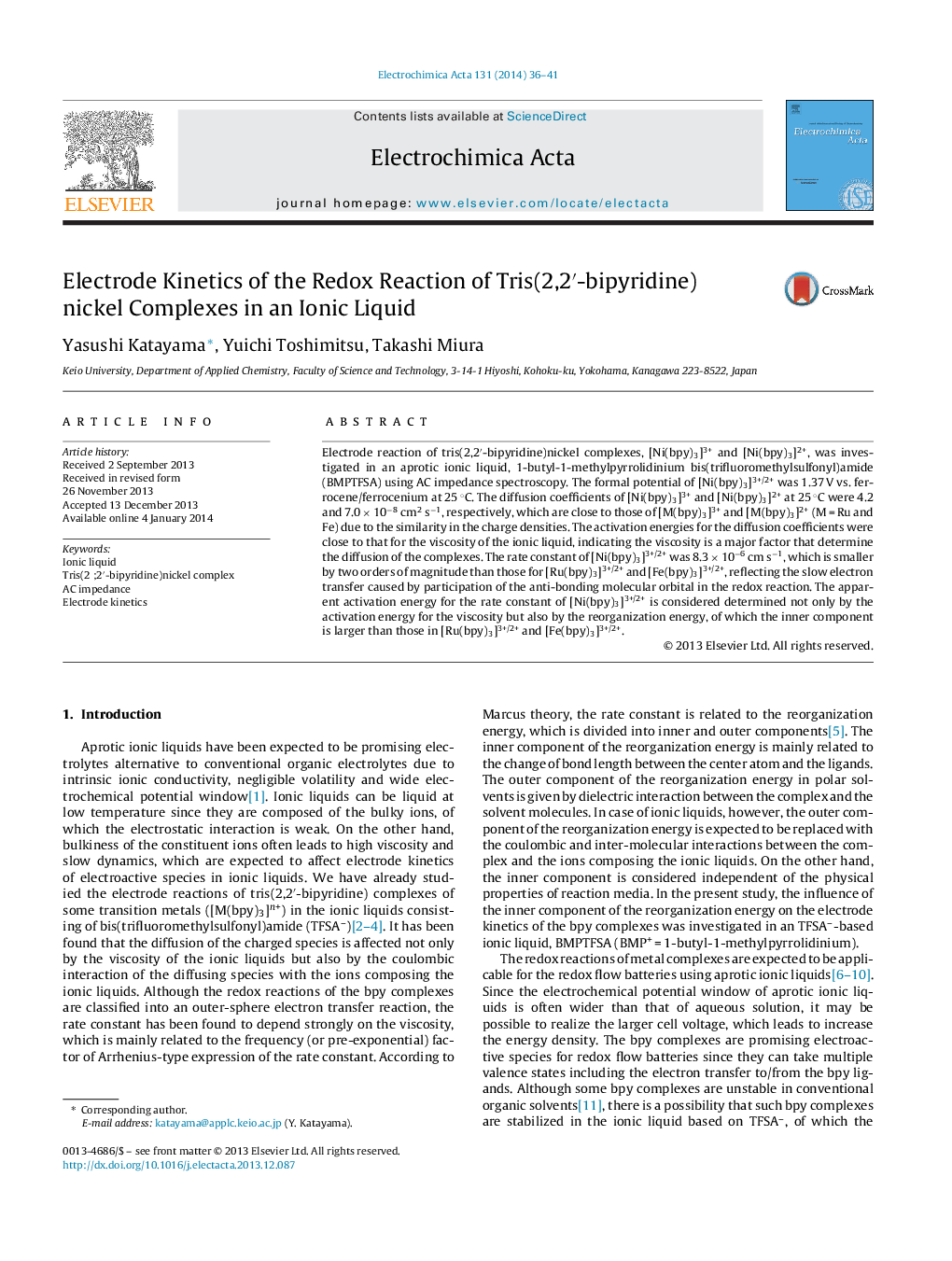| Article ID | Journal | Published Year | Pages | File Type |
|---|---|---|---|---|
| 185708 | Electrochimica Acta | 2014 | 6 Pages |
Electrode reaction of tris(2,2′-bipyridine)nickel complexes, [Ni(bpy)3]3+ and [Ni(bpy)3]2+, was investigated in an aprotic ionic liquid, 1-butyl-1-methylpyrrolidinium bis(trifluoromethylsulfonyl)amide (BMPTFSA) using AC impedance spectroscopy. The formal potential of [Ni(bpy)3]3+/2+ was 1.37 V vs. ferrocene/ferrocenium at 25 °C. The diffusion coefficients of [Ni(bpy)3]3+ and [Ni(bpy)3]2+ at 25 °C were 4.2 and 7.0 × 10−8 cm2 s−1, respectively, which are close to those of [M(bpy)3]3+ and [M(bpy)3]2+ (M = Ru and Fe) due to the similarity in the charge densities. The activation energies for the diffusion coefficients were close to that for the viscosity of the ionic liquid, indicating the viscosity is a major factor that determine the diffusion of the complexes. The rate constant of [Ni(bpy)3]3+/2+ was 8.3 × 10−6 cm s−1, which is smaller by two orders of magnitude than those for [Ru(bpy)3]3+/2+ and [Fe(bpy)3]3+/2+, reflecting the slow electron transfer caused by participation of the anti-bonding molecular orbital in the redox reaction. The apparent activation energy for the rate constant of [Ni(bpy)3]3+/2+ is considered determined not only by the activation energy for the viscosity but also by the reorganization energy, of which the inner component is larger than those in [Ru(bpy)3]3+/2+ and [Fe(bpy)3]3+/2+.
